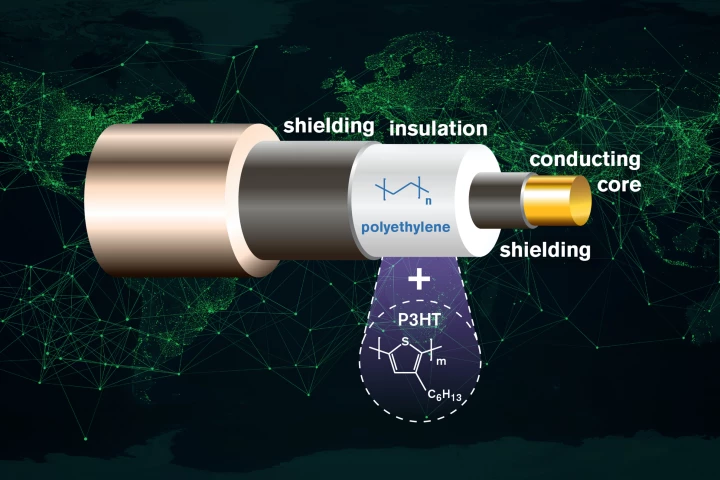Chalmers University
-
Nobody wants harmful bacteria on objects such as medical implants, yet we also don't want them building up a resistance to antibiotics. Well, help may be on the way, in the form of metal structures that kill the microbes by poking holes in them.
-
In what could be an industry shifting breakthrough, researchers have created a screen about the size of a human pupil with a resolution that breaks through the limits of pixels. The invention could radically change virtual reality and other applications.
-
As we increasingly move toward renewable energy sources like wind turbines, we're going to require the best means possible of relaying electricity from them to our cities. A new cable-insulating material may allow us to do so much more efficiently.
-
We've recently been hearing about solid state batteries, which have some definite advantages over their conventional counterparts. Although they're still not quite ready for everyday use, a new butter-like substance could help change that.
-
Several years ago, we heard how scientists from Sweden's Chalmers University had created a 3D-printing medium made from wood fiber. Now, they've developed a new method of printing with it, producing solid material with the structure and qualities of natural wood.
-
When fish are filleted in a seafood-processing plant, or when shrimp and shellfish are boiled, a lot of wastewater is generated. Currently, that water is discarded. An experimental new system, however, is able to draw much of the nutrients from it – and those nutrients could have several uses.
-
Studded tires are a popular choice in northern climes come winter, thanks to the extra grip they afford on ice and compacted snow. But new research from Chalmers University of Technology in Sweden says they actually cost more lives than they save.
-
Cellulose – the most abundant organic compound on the planet – has successfully been used to 3D print a range of objects, including some that are electrically conductive. It's being pitched as a biodegradable and renewable alternative to the plastics and metals commonly used in 3D printing.
-
Johan Löfgren and Rüdiger Haas of Chalmers University in Sweden have developed a new way of measuring sea level that uses satnav signals for constant, real-time monitoring that promises new insights into many fields, including climate change.
-
A newly-developed optical amplifier is said to allow fiber optic signals to travel four times farther, with little in the way of added noise.









